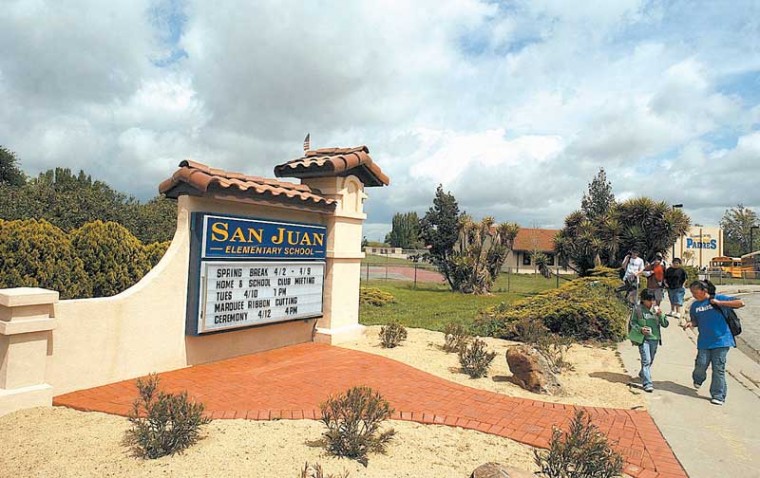The potential closure or reconstruction of San Juan School due to seismic safety issues may have to be funded in part by funds from a bond measure district voters passed three years ago to fund other projects not related to seismic issues.
Diverting the money from Measure Z, a $9.7 million general obligation bond designated to fund projects such as replacing portable classrooms with permanent facilities at Aromas School and upgrading technology plumbing, and heating and cooling systems in all district schools, is viewed by school officials as a broken promise of sort to voters.
“The district had no idea of the seismic vulnerability of the San Juan School buildings when developing the Measure Z project list” during the campaign, said Jeanne Howland, the district’s interim business manager, in an email to the district’s legal counsel. “The superintendent feels that the board-adopted uses of Measure Z proceeds do not encompass San Juan seismic issues, and if Measure Z proceeds are forced by the state to be used for San Juan seismic upgrade, the district’s other two schools will be short-changed on the promise to the voters for use of Measure Z money.”
Measure Z, which was approved by voters in Nov. 2010, extends property taxes for an additional 25 years beyond the 15 years a current bond had remaining.
Taxpayers owe approximately $53 per $100,000 of assessed value of their property per year to finance the bond. Supporters of the measure promoted it as a creative way to improve school facilities by extending, rather than raising, taxes.
San Juan School, located 170 feet east of the San Andreas Fault, has seven of the 23 most seismically vulnerable buildings in California – including five of the school’s six permanent classroom buildings.
The state has mandated that a 450-foot-long trench be dug at the site so a state geologist can map potential fault lines. If “spiders” – or cracks from the fault – are found within 50 feet of school buildings, they site may have to be condemned.
School officials have estimated that the trenching will cost $250,000, while reconstruction costs could range from $4 million for a retrofit of existing buildings to $40 million for closure, relocation and reconstruction of the entire campus.
The district expects the matter of who will pay for the work to be heard by the state at a meeting in late May. The district wants the state to fund the trenching work and it is asking for the state to also finance a good portion of any construction work deemed necessary after the seismic evaluation.
There is still $7.7 million of Measure Z funds available, but the district hopes to keep that money available for other district projects.
“The whole matter is kind of up in the air right now,” Howland said. “It’s quite a conundrum because the school board members feel they made a pledge to the community that these are the matters we’re going to take care of,” such as adding a multipurpose room to Anzar High School and infusing technology at all schools in the district. “Now these (seismic) issues popped up that we weren’t aware of. The board is uncomfortable using so much money at one site without knowing when they’d get reimbursed by the state. The issue was how are we going to be equitable to the other sites?”
District representatives recently testified before the State Allocation Board in Sacramento to request state funding for the seismic trenching work. The matter will again be heard at the board’s May meeting.
The district has been told that the state will pay for 40 percent of new construction and match the district’s contribution on the seismic upgrade of other buildings. The district wants the state to pay 100 percent of the cost of the project.
David Casnocha, an attorney advising the district, said that Measure Z permits the use of bond proceeds to repair or construct school facilities.
“Even though these seismic repairs were not the promoted purpose of the bond, and many voters will say they were short-changed, if you asked me if bond funds could be lawfully expended for the described repairs, I would answer ‘yes,’” Casnocha said in an email to Howland. “This sounds like unwelcome Christmas cheer.”










